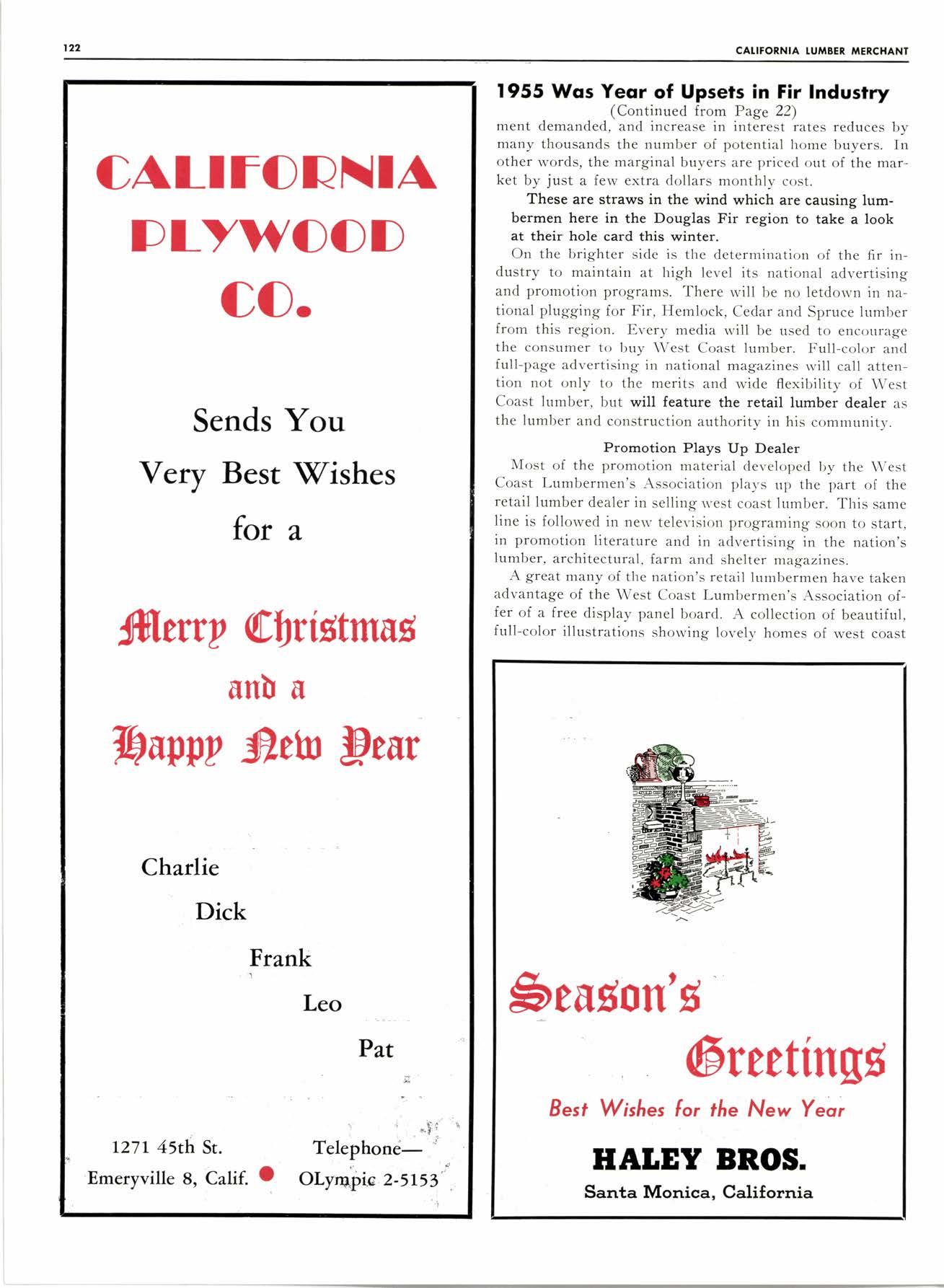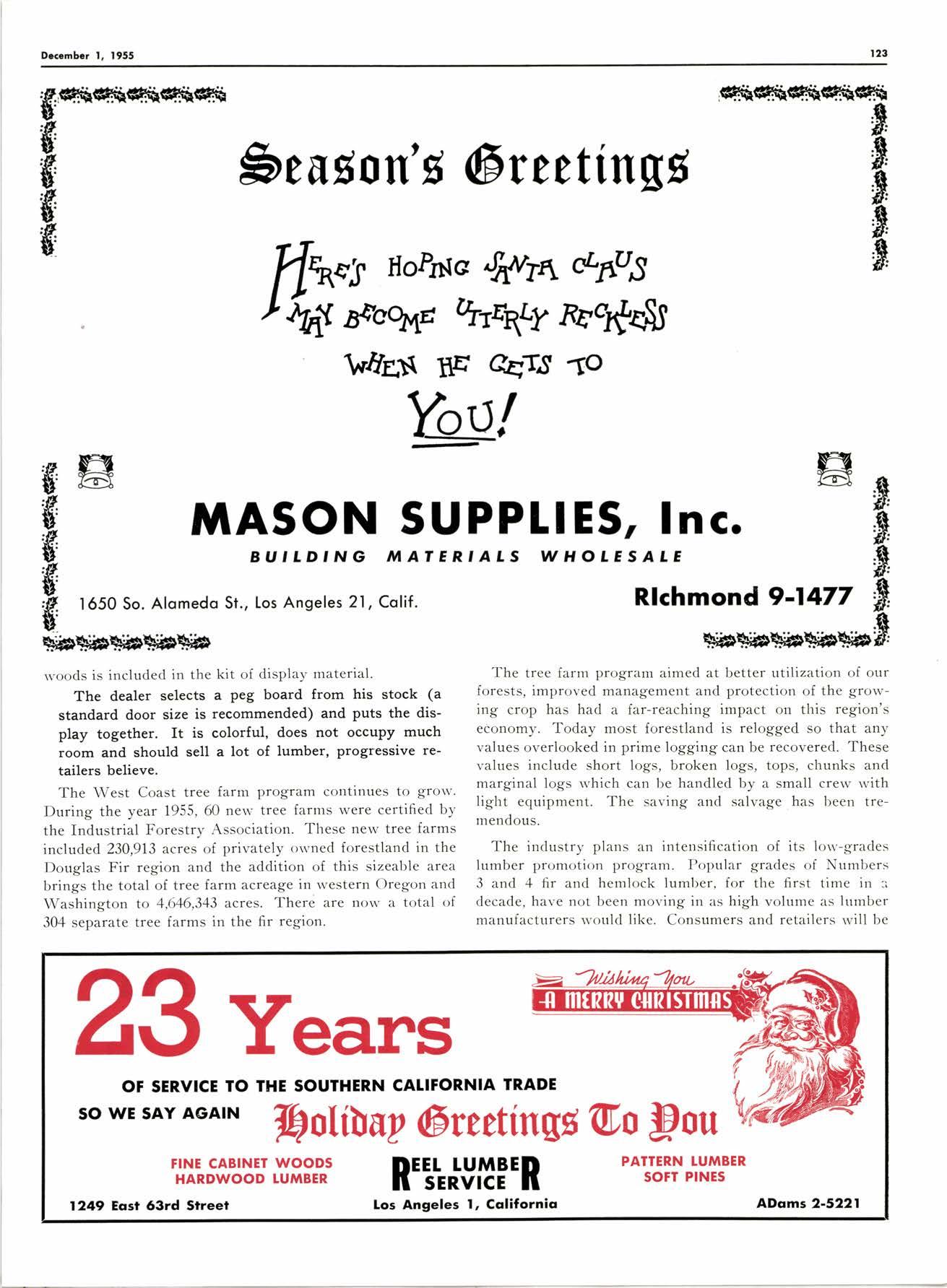
2 minute read
OALITOENIA pLywooD oo.
1955 Wqs Yeor of Upsefs in Fir Industry
(Continued f.rom Page 22) ment demanded, and increase in interest rates reduces by many thousands the number of potential home buyers. fn other words, the marginal buyers are priced out of the market by just a few extra dollars monthly cost.
These are straws in the wind which are causing lumb.ermen here in the Douglas Fir region to take a look at their hole card this winter.
On the brighter side is the determination of the fir industry to maintain at high level its national advertising and promotion programs. There will be no letdown in national plugging for Fir, Hemlock, Cedar and Spruce lumber from this region. Every media will be used to encourage the consumer to buy West Coast lumber. Full-color and full-page advertising in national magazines will call attentionnotonly to the merits and wide flexibility of West Coast lumber, but will feature the retail lumber dealer as the lumber and construction authority in his community.
Promotion Plays Up Dealer
Most of the promotion material developed by the West Coast Lumbermen's Association plays up the part of the retail lumber dealer in selling west coast lumber. This same line is followed in nerv television programing soon to start, in promotion literature and in advertising in the nation's lumber, architectural, farm and shelter magazines.
A great many of the nation's retail lumbermen have taken advantage of the West Coast Lumbermen's Association offer of a free display panel board. A collection of beautiful, full-color illustrations showing lovely homes of west coast
Alomedo St., los Angeles 21, Colif.
u'oods is included in the kit of display material.

The dealer selects a peg board from his stock (a standard door size is recommended) and puts the display together. It is colorful, does not occupy much room and should sell a lot of lumber, progressive retailers believe.
The West Coast tree farm program continues to gro\ '' During the year 1955, 60 new' tree farms were certified by the Industrial Forestry Association. These new tree farms included 230,913 acres of privately owned forestland in the Douglas Fir region and the addition of this sizeable area brings the total of tree farm acreage in western Oregon and Washington to 4,546,343 acres. There are now a total of 304 separate tree farms in the fir region.
Rlchmond 9-1477
The tree farm program aimed at better utilization of our forests, improved management and protection of the growing crop has had a far-reaching impact on this region's economy. Today most forestland is relogged so that any values overlooked in prime loggingcan be recovered. These values include short logs, broken logs, tops, chunks and marginal logs which can be handled by a small crew rvith light equipment. The saving and salvage has been tremendous.
The industry plans an intensification of its lo'iv-grades lumber promotion program. Popular grades of Numbers 3 and 4 fir and hemlock lumber, for the first time in :r decade, have not been moving in as high volume as lumber manufacturers would like. Consumers and retailers rvill be










